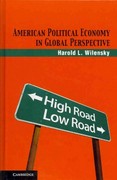Question
1. A cost of inflation is that: A) it makes everyone rich. B) it makes the poor poorer but the rich richer. C)there are no
1. A cost of inflation is that:
A) it makes everyone rich.
B) it makes the poor poorer but the rich richer.
C)there are no costs of inflation because inflation does not make the society as a whole poorer.
D) it may reduce the real income.
2. Suppose that a bank expects inflation to be 2 percent and charges borrowers an interest rate
of 4 percent accordingly.Now suppose that inflation is actually 2 percent. In this case, inflation:
A) does not affect the distribution of income.
B) redistributes income from the bank to the bank's borrowers.
C) redistributes income from the bank's borrowers to the bank.
D) redistributes income from the bank to the bank's lenders.
3. Suppose that a bank expects inflation to be 3 percent and charges borrowers an interest rate
of 5 percent accordingly.Now suppose that inflation is actually 4 percent. In this case, inflation:
A) does not affect the distribution of income.
B) redistributes income from the bank to the bank's borrowers.
C) redistributes income from the bank's borrowers to the bank.
D) redistributes income from the bank to the bank's lenders.
4. A rise in the value of the dollar relative to other currencies will:
A) increase demand for U.S. goods, shifting the U.S. aggregate demand curve to the right.
B) increase demand for U.S. goods, shifting the U.S. aggregate demand curve to the left.
C) decrease demand for U.S. goods, shifting the U.S. aggregate demand curve to the right.
D) decrease demand for U.S. goods, shifting the U.S. aggregate demand curve to the left.
5. The increase in taxes enacted in the early 1990s to eliminate the U.S. budget deficit most likely:
A) shifted the AD curve to the left. C) made the AD curve flatter.
B) shifted the AD curve to the right. D) made the AD curve steeper.
Use the following to answer questions 6:
6. Refer to the graph above.From 1938 to 1943 the Federal deficit rose from $1.0 billion to
$53.8 billion due to increased defense spending. The effect of this on the AD curve can be
shown by:
A) a movement from A to B C) a shift from AD0 to AD1
B) a movement from B to A D) a shift from AD0 to AD2
7. Short-run equilibrium exists:
a. where the AD curve intersects the SRAS curve,
b. where the AD curve intersects the LRAS curve,
c. on the SRAS curve only
d. on the AD curve only
8. Starting from short-run equilibrium, the following occurs: interest rate decreases. What will be the effect on the price level, Real GDP, and unemployment in the short-run?
- the price level falls, Real GDP rises, and unemployment falls,
- the price level rises, Real GDP rises, and unemployment falls,
- the price level falls, Real GDP falls, and unemployment rises,
- the price level falls, Real GDP falls, and unemployment rises.
9. Starting from the short-run equilibrium, the following occurs: U.S dollar depreciates. What would
be the effect on the price level, Real GDP, and unemployment in-short-run?
a. the price level rises, Real GDP rises, and the unemployment rate rises,
b. the price level rises, Real GDP falls, and the unemployment rate falls,
c. the price level falls, Real GDP rises, and the unemployment rate falls,
d. the price level rises, Real GDP rises, and the unemployment rate falls.
10. Refer to the graphs below. According to an article published in Business Week in October 2002, "The stock market plunge is weighing heavily on the both, businesses and consumers". The graph that would illustrate the consequences of it to the economy in the short-run is ______________.
Graph A Graph B Graph C
A) Graph B B) Graph C C) Graph A D) none of them
11. Refer to the graph below. The economy given in the graph below started out in long-run equilibrium (Yf) and the price level P1, then the AD1 curve shifted to AD2. You can conclude that the economy was exposed to ___________________caused by _______________
a) Positive supply shock; an increase in total spending
b) Negative demand shock; higher interest rates.
c) Positive demand shock; lower interest rates.
d) Negative supply shock; fall in the crude oil prices.
12. Suppose the following table illustrates the hypothetical values of actual Real GDP (Y), the potential Real GDP (Y*), and the price level in year 2021. Assume the NRU = 5%
Year Potential Real GDP Actual Real GDP Price level Inflation U
Y* Y P
- $19.0 trillion $18.8 trillion 104 1% 9.6%
Refer to the table above. The economy from above is in ____________________, and if the government does not take any policy action, overtime the _______________ moves the economy to the potential real GDP with a ____________ price level; but if the government undertakes policy action, the __________ brings the economy to the potential output, however with a _____________price level.
A) expansion with inflation; AD; lower; SRAS; higher
B) recession with cyclical unemployment; SRAS; lower; AD; higher
C) expansion with low unemployment; AD, lower; SRAS; higher.
D) recession with frictional unemployment; SRAS, higher; AD; lower.
13.If the natural unemployment rate is 5 percent and the actual unemployment rate is 8 percent, then the economy is:
a. producing more Real GDP than it does at full employment.
b. in an inflationary gap.
c. producing less Real GDP than it does at full employment /recessionary gap/.
d. a and b
Step by Step Solution
There are 3 Steps involved in it
Step: 1

Get Instant Access to Expert-Tailored Solutions
See step-by-step solutions with expert insights and AI powered tools for academic success
Step: 2

Step: 3

Ace Your Homework with AI
Get the answers you need in no time with our AI-driven, step-by-step assistance
Get Started


